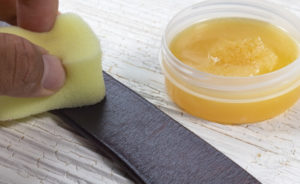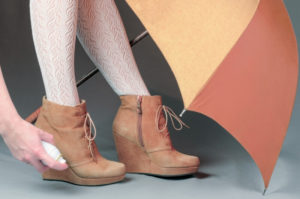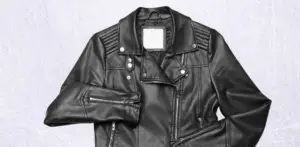Do leather jackets keep you warm?
Do leather jackets keep you warm? Or are they just a fashion statement for the fearless and fashionable?
We know that leather jackets are undeniably cool. Whether you’re channeling your inner James Dean or going for that classic biker look, there’s just something about a leather jacket that screams “style.”
But can they also be practical? Can you wear your leather jacket in the dead of winter and still feel toasty warm?

Do leather jackets keep you warm?
Yes, leather jackets can keep you warm enough during the cold season. Most leather coats are lined on the inside with materials like wool, quilt, or shearling, which retain body heat in order to keep you warm and comfortable even when the weather is extremely cold and snowing.
Actually, according to Google Trends, the fall and winter period sees a rise in the demand for leather jackets.
Insulating properties of leather
Leather is a unique material that has insulating properties making it a popular choice for clothing items like jackets, boots, and gloves.
These insulating properties include;
-
Its natural thickness and density
One of the main reasons why leather is an effective insulator is due to its natural thickness and density.
The fibers of the leather are tightly packed together, which creates a barrier against the cold air outside.
When you wear a leather jacket, the air between the fibers heats up and becomes trapped, forming a layer of insulation that keeps you warm.
-
Texture of leather
The texture of leather also plays a role in its insulating properties.
The surface of the leather has a rough texture that helps to trap air pockets and prevents heat from escaping.
This texture can be further enhanced through the process of tanning, which involves treating the leather with chemicals to make it softer and more pliable.
-
Breathability of leather
Leather is also a breathable material, which means it allows moisture to escape while keeping cold air out.
This is important in maintaining a comfortable temperature, as excess moisture can lead to discomfort and even hypothermia in cold conditions.
The breathability of leather also helps to prevent overheating, which can be a problem with synthetic materials that don’t allow moisture to escape.
Overall, the insulating properties of leather are what make it a popular choice for winter wear. This means that your leather jacket has the ability to trap and retain body heat, which makes it effective at keeping you warm in cold weather conditions.
Factors that affect the warmth of leather jackets
However, the effectiveness of a leather jacket to keep the user warm depends on a number of factors.
These factors include the kind of leather the jacket is made of, whether the jacket is lined or insulated and the type of lining and insulation material used.
1. Leather material
Leather jackets can be made from real or faux leather. In contrast to faux leather which feels cold to the touch, real leather is breathable and tends to adjust easily to variations in temperature.
However, leather jackets made from sheep and deerskin are considered to be warmer than those made from cowhide. This is based on the fact that sheep and deer skins have a natural insulator so they keep heat inside to protect you from the cold.
2. Lined vs unlined leather jacket
Another factor to consider is whether the leather jacket is lined or unlined.
Most leather coats have an interior lining made of fabric that is sewn to the garment. In addition to making the leather soft against the skin, the lining also provides some added warmth.
However, some leather jackets, particularly those worn in the summer, are unlined. The leather is more breathable without the lining, making the jacket lighter and cooler.
3. Type of lining
There are different types of fabrics used for lining leather jackets such as cotton, satin, quilt polyester, mesh, fleece, Sherpa, shearling, nylon, and wool.
Some of these materials make the jacket warmer than others. For instance, wool lining, which is obtained from sheep, provides the best insulation. Additionally, it feels cozy and comfortable but tends to make the jacket heavier.
You are likely to experience the same level of warmth with fleece-lined, Sherpa-lined, and shearling-lined leather jackets.

However, leather jackets lined with nylon or satin are quite popular. Although they give the jacket a more luxurious appearance, they do not offer enough insulation. This makes such jackets not suitable for cold weather.
Warmth levels of different types of leather jackets
When it comes to leather jackets, there are several different styles to choose from, each with its unique features and level of warmth.
Here is a comparison of the warmth levels of different types of leather jackets:
-
Bomber Jackets
The bomber jackets are a classic style that has been popular for decades. They typically have a relaxed fit, a front zipper, and a ribbed waistband and cuffs.
Bomber jackets are often lined with warm materials like wool or fur, which provides excellent insulation.
Thus, they are generally warmer than other types of leather jackets making them a good choice for cold weather.
-
Moto jackets
The moto jackets are a more modern style that is often associated with motorcycle riders. It has a slim fit, and asymmetrical zipper, and usually lacks any sort of waistband or cuffs.
Moto jackets are often made with lighter-weight leather, which makes them less warm than other types of leather jackets.
However, they can still be suitable for milder winter weather or layering with a sweater.
-
Biker jackets
The biker jackets are a more fitted style that is typically worn for its edgy, rebellious look.
They usually have a front zipper, snap-down lapels, and multiple pockets.
While they may not be as warm as bomber jackets, they can still provide some insulation, especially if they are made with thicker leather and have a lining.
It is important to understand that the warmth levels of different types of leather jackets will still depend on several factors, such as the thickness of the leather, the type of lining, and the style of the jacket we talked about above.
This means that while bomber jackets are generally considered the warmest type of leather jacket, biker, and moto jackets can still provide some level of insulation depending on their design and materials.
So, when choosing a leather jacket, it’s important to consider your needs and the type of weather you’ll be wearing it in so you can find one that is practical yet stylish.
Wool vs leather jacket
When it comes to comparing wool jackets vs leather jackets, wool jackets are warmer and more breathable than leather.
Wool provides better insulation than leather because its fibers have tiny air pockets that are able to trap heat and keep cold air out.
In addition, wool jackets are often lined with additional insulating materials like polyester or down, which provides additional warmth.
Leather jackets on the other hand are water-resistant, durable and naturally insulating thanks to the thickness and texture of the leather but they may not be as warm as wool jackets.
Do faux leather jackets keep you warm?
Yes, faux leather jackets can keep you warm during cold days but not as much as real leather.
Faux leather is typically a PU or plastic material that tends to feel cold and stiff against your body. The plastic material might be able to block out the wind on a cold day but will not retain the heat that is generated by your body.
So, if you want to wear your faux leather jacket in the rain or snow, make sure it is properly lined with thick and warm material like wool or fleece.
When to wear a leather jacket
The ideal temperature range for wearing a leather jacket may vary depending on the individual’s preferences and the specific features of the jacket.
In general, leather jackets are best suited for temperatures between 50 and 70 degrees Fahrenheit (10 to 21 degrees Celsius). In this range, a leather jacket can provide enough warmth without causing overheating or discomfort.
In colder temperatures, below 50 degrees Fahrenheit (10 degrees Celsius), it may be necessary to layer a leather jacket with other warm clothing items, such as a sweater or scarf, to provide extra insulation.
A thicker-lined leather jacket may also be more suitable for colder temperatures.
On the other hand, in warmer temperatures above 70 degrees Fahrenheit (21 degrees Celsius), a leather jacket may be too heavy and warm to wear comfortably. In this case, it’s best to opt for lighter outerwear options, such as a denim jacket or a windbreaker.
Tips on how to layer a leather jacket for warmth
When it comes to dressing for cold weather, the key is to layer. So if your leather jacket isn’t lined with a warm material, you can layer it for additional protection from the cold.
Here are some tips on how to layer a leather jacket for warmth:
-
Add a sweater
A simple way to add warmth to a leather jacket is to layer it over a sweater. This creates an extra barrier of insulation between your body and the cold air outside.
A wool or cashmere sweater can provide extra insulation.
For a casual look, try a chunky knit sweater. For a dressier look, opt for a thin turtleneck or a fitted cardigan.
-
Layer with a vest
If you want to add an extra layer of warmth without adding too much bulk, try layering a down vest under your leather jacket.
This will provide insulation without restricting movement or making you feel weighed down.
Make sure to choose a vest that fits snugly and has a high collar to keep your neck warm.
-
Add a hoodie
A hoodie can be a comfortable and casual layering option for a leather jacket. Choose a slim-fitting hoodie that can be worn under the jacket without adding too much bulk.
This will provide additional insulation for your torso and arms while the leather jacket can provide protection against wind and rain.
-
Wear a scarf or turtle neck shirt
A scarf or a turtleneck shirt is another great layering option for a leather jacket for added warmth.
They both provide additional insulation around the neck area, which can help keep you warm in cold weather. Also, they add a pop of color or pattern to your outfit.
-
Accessorize with gloves and a hat
Don’t forget to add gloves and a hat to your winter outfit. These accessories keep your extremities warm and can add a stylish touch to your look.
Choose gloves and a hat that complements your leather jacket and the rest of your outfit.
How to maintain the insulating properties of leather jackets
Taking care of your leather jacket is essential to ensure it lasts a long time and retains its insulating properties.
While leather is a durable and strong material, it can become dry and brittle if not properly maintained, which can lead to a loss of insulation.
By following these tips, you can keep your leather jacket in top shape and help it keep you warm for years to come.
1. Store it properly
Storing your leather jacket properly is important for maintaining its insulating properties.
Leather can be affected by extreme temperatures and humidity, so it’s important to store it in a cool, dry place away from direct sunlight and heat sources.
Using a wooden hanger or laying it flat can help prevent the leather from stretching and losing its shape over time. So avoid using a metal hanger as this can cause indentations and distortions in the leather.
Additionally, you can cover the jacket with a breathable garment bag to protect it from dust and other contaminants.
2. Protect it from moisture
Leather can be damaged by excessive moisture, which can cause the jacket to shrink affecting its insulating properties.
So avoid wearing your leather jacket in heavy rain or snow or take the necessary precautions when wearing your jacket in rainy or snowy conditions. For instance,
If your jacket does get wet, gently blot it with a towel and allow it to air dry away from direct heat sources.
To prevent water damage in the future, consider applying a water-repellent spray to the leather.
3. Condition the leather
Leather is a natural material and can dry out over time, which can cause it to become stiff and lose its insulating abilities.
To keep the leather supple and moisturized, it’s important to use a leather conditioner or oil. These products contain natural oils and emollients that penetrate the leather to nourish and protect it.
When you apply the conditioner, allow it to absorb into the leather for several hours or overnight. This allows the leather to soak up the moisture and become more supple.
After the conditioner has been absorbed, use a clean cloth to buff the surface of the leather to a shine.
Conclusion
To conclude, a leather jacket by itself will break the wind and protect you from rain but will not keep you warm at certain low temperatures. The warmth level of different types of leather jackets varies based on their style and construction.
So you need a leather jacket that is well-lined and insulated for extremely cold seasons.
Ideally, the warmest leather jackets are those that are insulated using wool, Sherpa, or fleece and will effectively keep you warm, cozy, and comfortable even in winter.
Additionally, to increase the warmth of your leather coat, consider donning some warm clothing underneath to keep warm such as a turtleneck shirt or hoodie.






